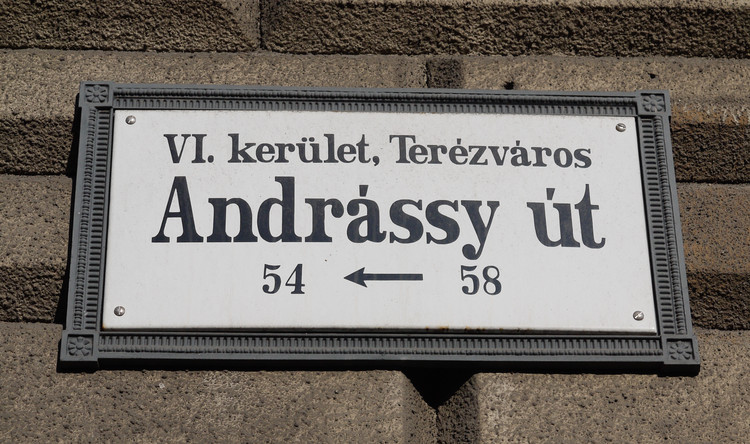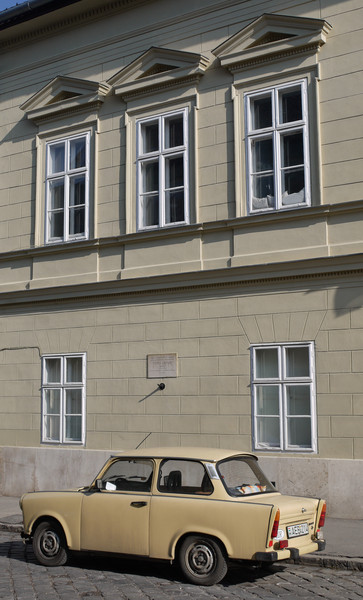Observations from Budapest:
- The smell walking past a Subway sandwich shop is exactly the same across the globe. That’s just weird.
- Roxette are apparently still around, and still doing gigs.
- Crossing eight lanes of traffic using a glorified zebra crossing is a little disconcerting.
- It’s still socially acceptable to use scantily-clad women in any and all forms of advertising.
- There is CCTV everywhere.
We were originally supposed to visit Budapest in January, but a poorly dog meant we had to postpone the trip 12 hours before departure. Fortunately hound dog has now recovered, so we flew out to the Hungarian capital last Friday morning. I find arriving in a foreign country the most stressful bit of any holiday, but in a lot of ways the most exciting too. Leaving the Arrivals lounge at the airport, everyone else disappeared off in taxis or minibuses, but we took the mildly adventurous route and wandered across to the train station. Transport by road from the airport to the city centre costs about £15, but the 20-minute train journey set us back just £1 each and proved far more relaxing. Pulling into the old-school station, we shouldered our bags and wandered off to the hotel. We checked in, grabbed some lunch in the lounge, and immediately set off to explore the city.
Heading first to the river, we crossed and climbed Gellért Hill to the citadel on the top. Budapest has a long and complicated history; this fort was built in 1851 by the Habsburgs to keep an eye on the Hungarians after the 1848 revolution. It’s an impressive structure with amazing views across the city.

We descended to Elizabeth Bridge (Erzsébet híd) and crossed back to the main shopping district. Budapest was originally two separate towns; Buda on the west bank of the River Danube, and Pest (where all the good shopping is) on the east bank. Retail therapy isn’t really our thing so we wound our way through back streets to the hotel.

The good weather continued on day two, which we had ear-marked for the old town. A hearty breakfast was taken early, and we marched over to the Chain Bridge. This was the first permanent bridge across the Danube, built the year after the revolution, and no mean feat considering it’s 375m long. Still, we should expect a quality product as it was designed by an Englishman as a copy of a bridge in Buckinghamshire, and building was supervised by a Scotsman. Rule Britannia, etc. As with most things in Budapest, it was bombed heavily during the second world war and had to be rebuilt. Arriving at the funicular station before it had started running, we climbed the steps to emerge in the old town atop the hill.

The Fisherman’s Bastion is a crazy Snow White-style castle affair (neo-gothic and neo-romanesque, architecture fans!) built with stunning panoramic views of Budapest. Constructed at the end of the 19th Century, it’s a viewing terrace so has never had any defensive or remotely military role. It was – predictably – bombed during the war and re-constructed shortly after.

Mental it might be, but standing up there early early in the morning under a clear blue sky, with no-one else around and the city still waking, you can see it was obviously a good idea.


A circuit of the old town followed, including a tour of the Budapest Castle Labyrinth, quite possibly the most bizarre attraction we’ve ever visited. The map outside shows an impressive collection of tunnels below the streets, firing your imagination and tempting you in. Having paid for entry, it quickly becomes apparent that you’ve been dragged into some kind of hippy retreat where the first five tunnels are filled with pan pipe music and the accompanying leaflet tells you that “the biggest labyrinth is the personal one within your own soul“. With it being a one-way circuit, you’re trapped underground with all this tosh and unable to escape. We eventually found our way back to the surface, and south to the castle.

It’s not a traditional castle, most of it having been built in the latter half of the 20th century and therefore looking more like a palace or museum. The site, however, has had a castle of some descriptions for centuries, albeit with occassional gaps in occupancy or structural integrity due to minor irritations like the Ottoman invasion in the 16th century and heavy bombing in World War II. From the castle we re-traced our steps back to the hotel. Our final day involved one of my favourite things, a UNESCO World Heritage Site. Andrássy út is one of the main boulevards in Budapest, and this showcase street also has the second-oldest underground railway in the world running underneath it (the London Underground is the oldest). Line one dates back to 1896 and is very quaint once you’re on board.

We walked out along the boulevard to a large park and Vajdahunyad Castle, which would have been more impressive if they hadn’t drained the substantial moat to carry out building work. From the park we took the Metro back into the city centre, and from there set off on foot again.

We had intended to get a bird’s eye view of Budapest from the viewing tower of the impressive St. Stephen’s Basilica, but unfortunately it was closed (we seem to have a habit of visiting these places when they’re doing maintenance on them!).

Given the history of the chain bridge and the metro, it’s no suprise to find that the parliament is modelled on the British Houses of Parliament (although the Hungarians did do exactly what I would have done in their position and build it a measley six metres longer than ours, just to make a point). It’s undoubtedly one of the most impressive buildings around, and security is suprisingly understated, consisting of a couple of bored-looking guards by the doors.

Our final destination was Margaret Island, the huge island in the middle of the Danube. Described by the guidebook as a haven of peace and quiet, they obviously didn’t go on a Sunday when the whole of Budapest descends on the only bit of greenery for miles around. After battling our way through the runners, walkers and cyclists for a while, we returned to base. On Monday morning I just had time for a quick run in the hotel gym, before the train / plane / bus / car combo back to Leicestershire. Despite only have two and a half days, we walked a total of 26 miles and I think covered the vast majority of what Budapest has to offer. It’s not quite as compact and coherant as somewhere like Prague – there are some pretty decrepit bits between the well-restored monuments and popular sights – but it’s definitely worth a look.